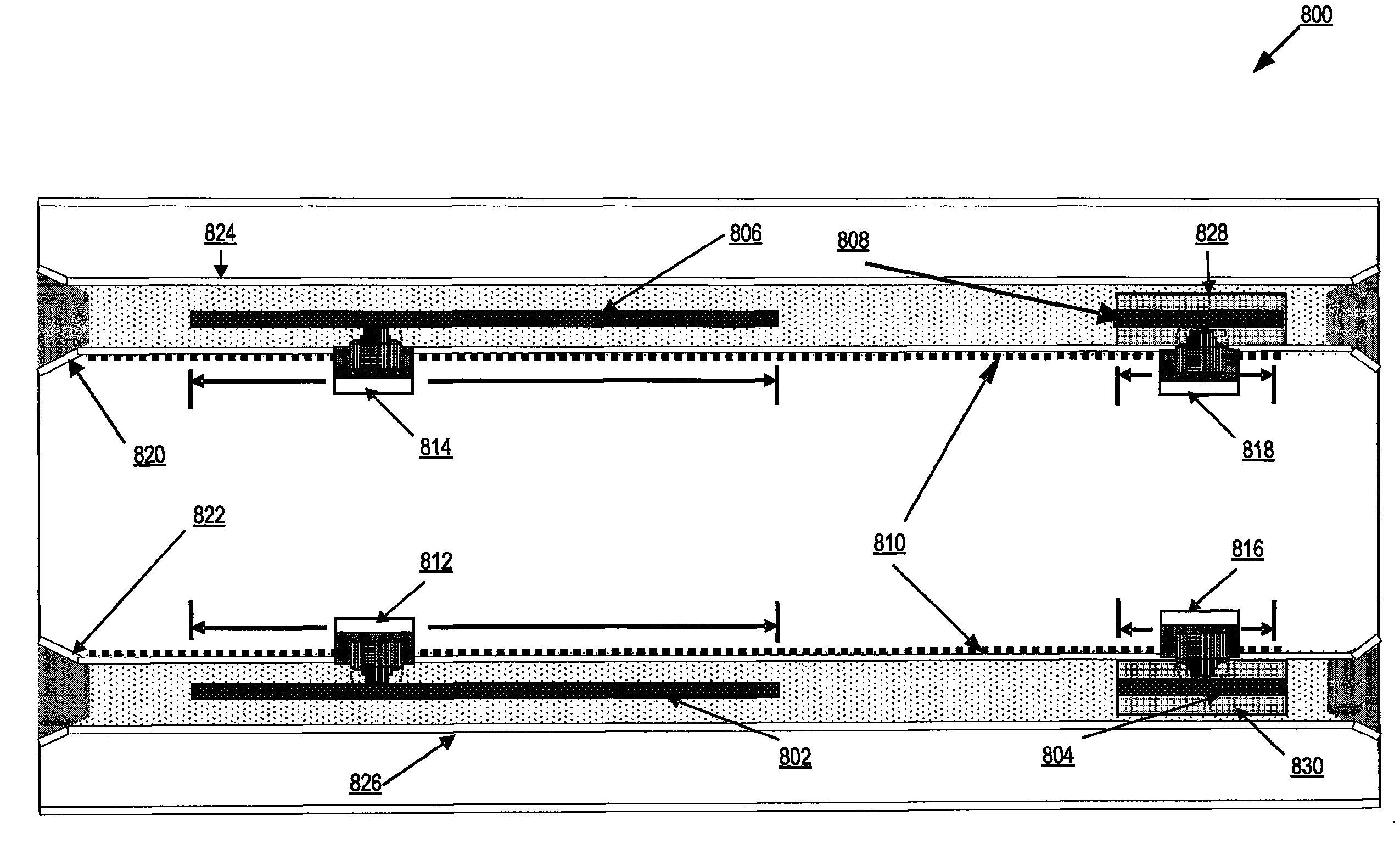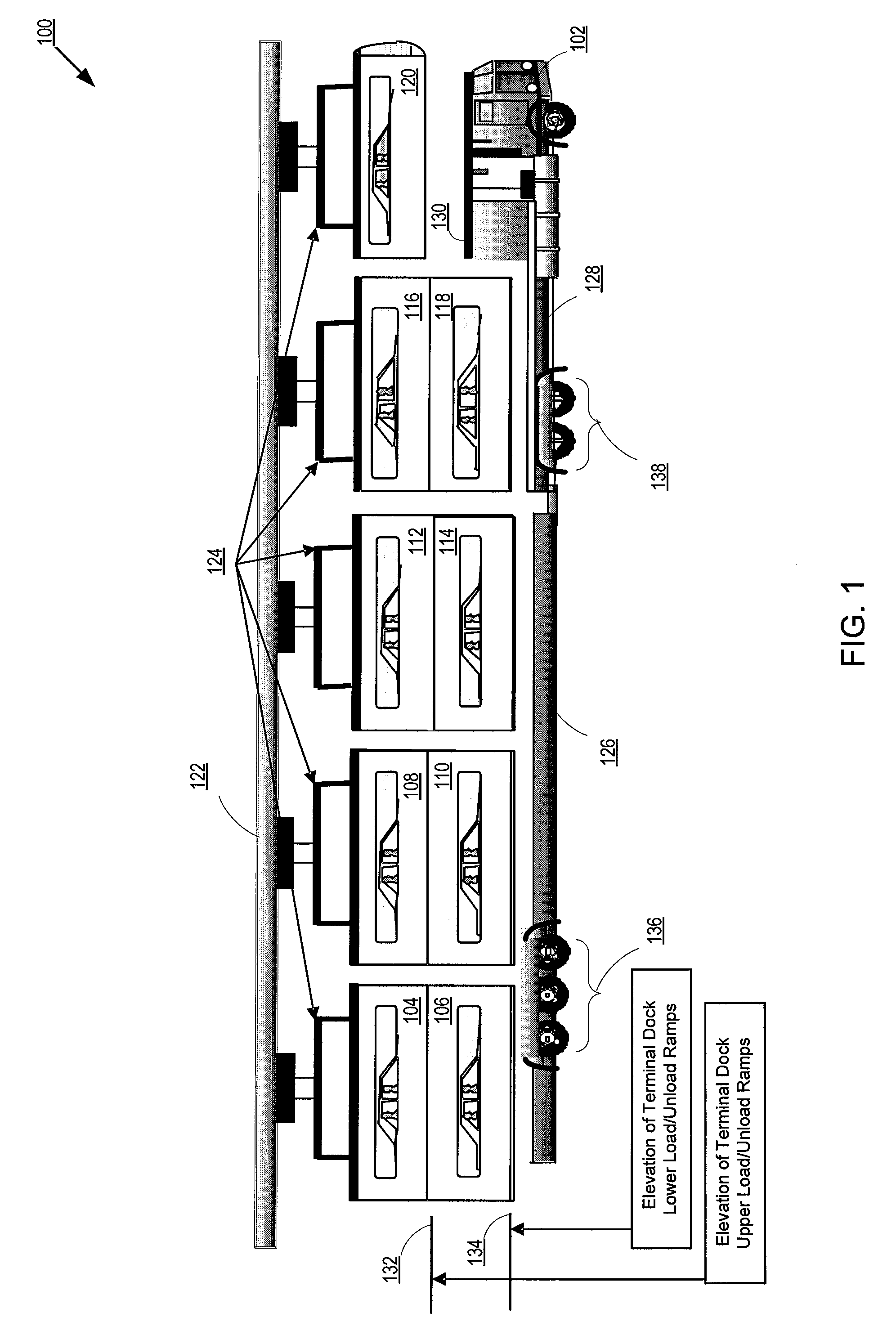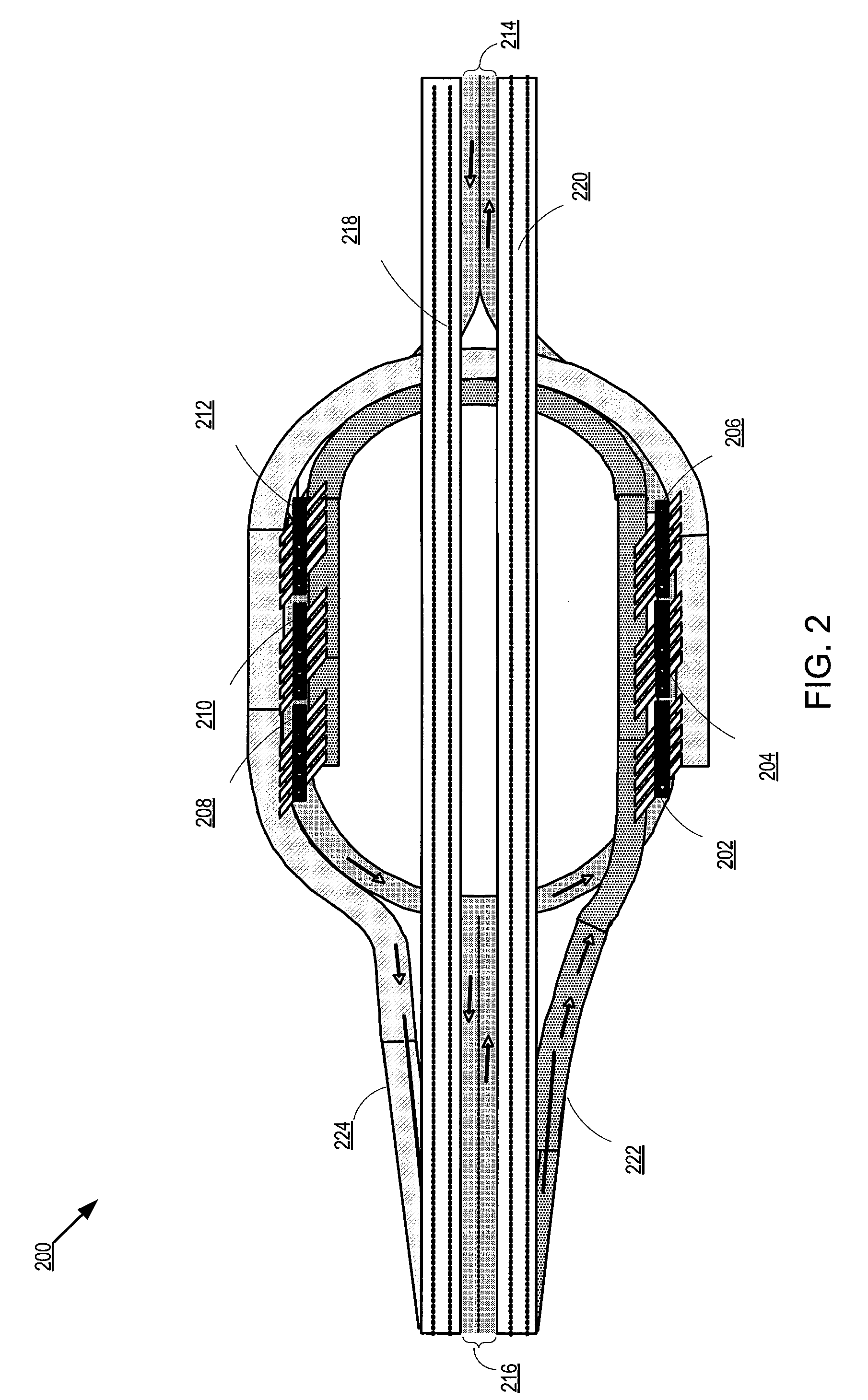In the U.S., as well as in many other nations, congestion for several decades has continued to increase because the rate at which highway capacity is constructed remains significantly below the
rate of growth in highway vehicle miles traveled.
Such back ups cause traffic
jams on the feeder roads and streets, and on the given segment and upstream of the feeder roads and streets.
Experience and numerous empirical and theoretical
traffic flow studies provide comprehensive evidence that when traffic flows exceed 2,000 to 2,200 cars per lane per hour, traffic flows become progressively unstable and unsustainable.
This
instability is due to random variations
in vehicle spacing, driver skills and performance, and a reduction in the available time to perform particular traffic maneuvers and spacing between vehicles that prevent a driver from performing the traffic maneuvers.
As traffic flows increase above the range of 2,000 to 2,200 cars per lane per hour, traffic then becomes increasingly subject to
chaotic break down from smooth, high-speed traffic flows into stop and start very low-speed, traffic
jams.
Such traffic
jams typically result in traffic flows decreasing to 1,000 passenger cars per lane per hour, or even less.
If the
traffic capacity of exit roadways is too low, and / or if traffic on the roadway exits is not flowing at or below outflow capacity of those roadway exits, then traffic attempting to exit onto the exit roadway backs up onto the roadway segment feeding the exit roadway, which causes delays, slow and / or
chaotic traffic flow, and breakdown into persistent very low flow, jammed conditions.
Other factors that may
impact traffic flows and / or render
traffic conditions problematic include:
visibility; weather conditions; accidents and incidents; stochastic effects; erratic and abnormal driver behavior; public safety traffic; construction zones; and
special events.
Driving under conditions of
darkness, or any lighting condition less favorable than normal
daytime lighting, decreases driver performance and suppresses traffic flows.
Adverse weather conditions create driving dangers that require slower speeds and create fundamentally unpredictable
chaotic conditions that depress traffic flows.
Similarly, vehicles suffering flat tires or mechanical problems may block or disrupt traffic until the affected vehicle is repaired or removed.
According to USDOT, traffic accidents and incidents cause approximately 25 percent of all congestion.
Each minute of lane blockage creates about four minutes of congestion after the incident is cleared.
On a road segment operating at or near its sustainable capacity, the start of congestion may create a vicious cycle effect in which minor congestion creates more congestion, and so on, until the segment is in a bumper to bumper, stop and go jam.
Public safety traffic (e.g., emergency vehicles) moving at high speed and having legal lane priority cause flow disruptions and suppress traffic
throughput.
Highway arrests for traffic violations cause traffic suppression effects similar to accidents and incidents.
Erratic and / or abnormal drivers (e.g., drivers driving at either abnormally high or abnormally low speeds and / or drivers weaving from lane to lane) disrupt normal traffic and suppress
throughput.
Impaired, inattentive drivers and drivers otherwise unable to control their vehicles force normal drivers to adjust their driving in ways that disrupt
free flow traffic.
Construction zones for highway construction and / or
rehabilitation projects commonly remove one or more lanes of capacity from highways thereby reducing traffic throughput and frequently causing severe
traffic congestion.
Special events (e.g., athletic, entertainment events, and annual holidays) create surges of traffic that may cause traffic demand levels to exceed available
traffic capacity with regard to input capacity, segment design capacity and / or outflow capacity.
Some experts conclude that in developed societies like the United States, the most practical roadway paths have already been put into highway use, and the growth of surrounding urban development and physical constraints (e.g., geographical and environmental) make expansion of existing roadways and / or construction of new roadways too expensive to be practical.
Furthermore, there have been periods in recent U.S. history when funds collected for the stated purpose of highway construction and maintenance have been withheld by the federal government and made unavailable to states, counties and cities for highway capacity maintenance and expansion.
Many highway experts consider urban / suburban highway capacity expansion by the conventional means of adding new lane miles to existing roadway systems in amounts sufficient to resolve congestion (e.g., an estimated doubling and / or tripling of highway capacity) impossible, as a practical matter, because of space constraints, budget limitations, legal and political realities.
Addressing the deficiency of highway capacity in urban / suburban settings is further complicated by empirical limitations demonstrated by currently available or reasonably foreseeable technologies that address highway congestion.
Thus, transportation systems and traffic demand reduction programs have not been successful at reducing
traffic congestion in the U.S.
Much more complex Autobus routes may be organized in metropolitan areas where multiple interconnecting highways exhibit persistent heavy congestion.
 Login to View More
Login to View More  Login to View More
Login to View More 


